Description
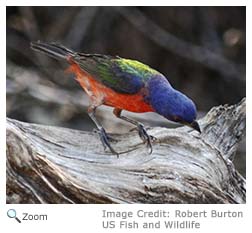 The painted bunting is a sparrow-sized bird, about 5.5 inches in length. It is one of the most colorful birds in North America. The male has bright red underparts and a bright red rump. It has a green back, a blue head, and a red eye ring. The painted bunting is a sparrow-sized bird, about 5.5 inches in length. It is one of the most colorful birds in North America. The male has bright red underparts and a bright red rump. It has a green back, a blue head, and a red eye ring.
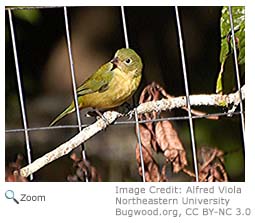 The female painted bunting is bright yellow-green with paler underparts. Both the male and the female have dark brown or black wings, a dark bill, and dark legs. The female painted bunting is bright yellow-green with paler underparts. Both the male and the female have dark brown or black wings, a dark bill, and dark legs.
Range 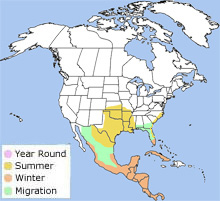 There are two breeding populations of the painted bunting in the United States. The eastern population breeds from North Carolina south to northern Florida.
The western population breeds from Kansas and Missouri south to the Gulf Coast and northeastern Mexico. The painted bunting winters in southern Florida, Mexico, Central America, and Cuba. There are two breeding populations of the painted bunting in the United States. The eastern population breeds from North Carolina south to northern Florida.
The western population breeds from Kansas and Missouri south to the Gulf Coast and northeastern Mexico. The painted bunting winters in southern Florida, Mexico, Central America, and Cuba.
|
|
Habitat
The painted bunting lives in hedgerows, briar patches, woodland edges, and swampy thickets.
Diet
The painted bunting forages on the ground and in low vegetation for seeds, insects, spiders, and snails.
Life Cycle
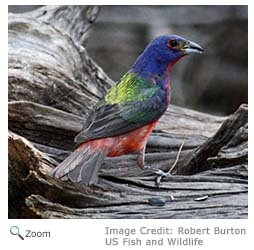 The male arrives at the breeding grounds before the female and selects and defends a mating territory. The female builds a cup-shaped woven grass nest lined with moss and fur and placed in the fork of a small tree or bush. She lays 3-4 eggs and incubates them for 11 days. The chicks are fed by the female and fledge when they are 12-14 days old. The female may have as many as three broods a year. The male arrives at the breeding grounds before the female and selects and defends a mating territory. The female builds a cup-shaped woven grass nest lined with moss and fur and placed in the fork of a small tree or bush. She lays 3-4 eggs and incubates them for 11 days. The chicks are fed by the female and fledge when they are 12-14 days old. The female may have as many as three broods a year.
Behavior
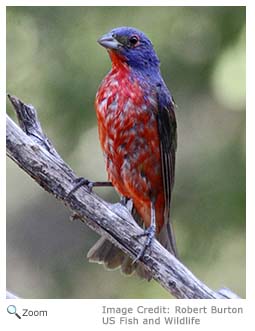 Though the painted bunting is colorful, it is difficult to spot because it is often under the cover of brush and thickets.
|

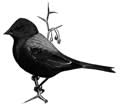


 There are two breeding populations of the painted bunting in the United States. The eastern population breeds from North Carolina south to northern Florida.
The western population breeds from Kansas and Missouri south to the Gulf Coast and northeastern Mexico. The painted bunting winters in southern Florida, Mexico, Central America, and Cuba.
There are two breeding populations of the painted bunting in the United States. The eastern population breeds from North Carolina south to northern Florida.
The western population breeds from Kansas and Missouri south to the Gulf Coast and northeastern Mexico. The painted bunting winters in southern Florida, Mexico, Central America, and Cuba.

